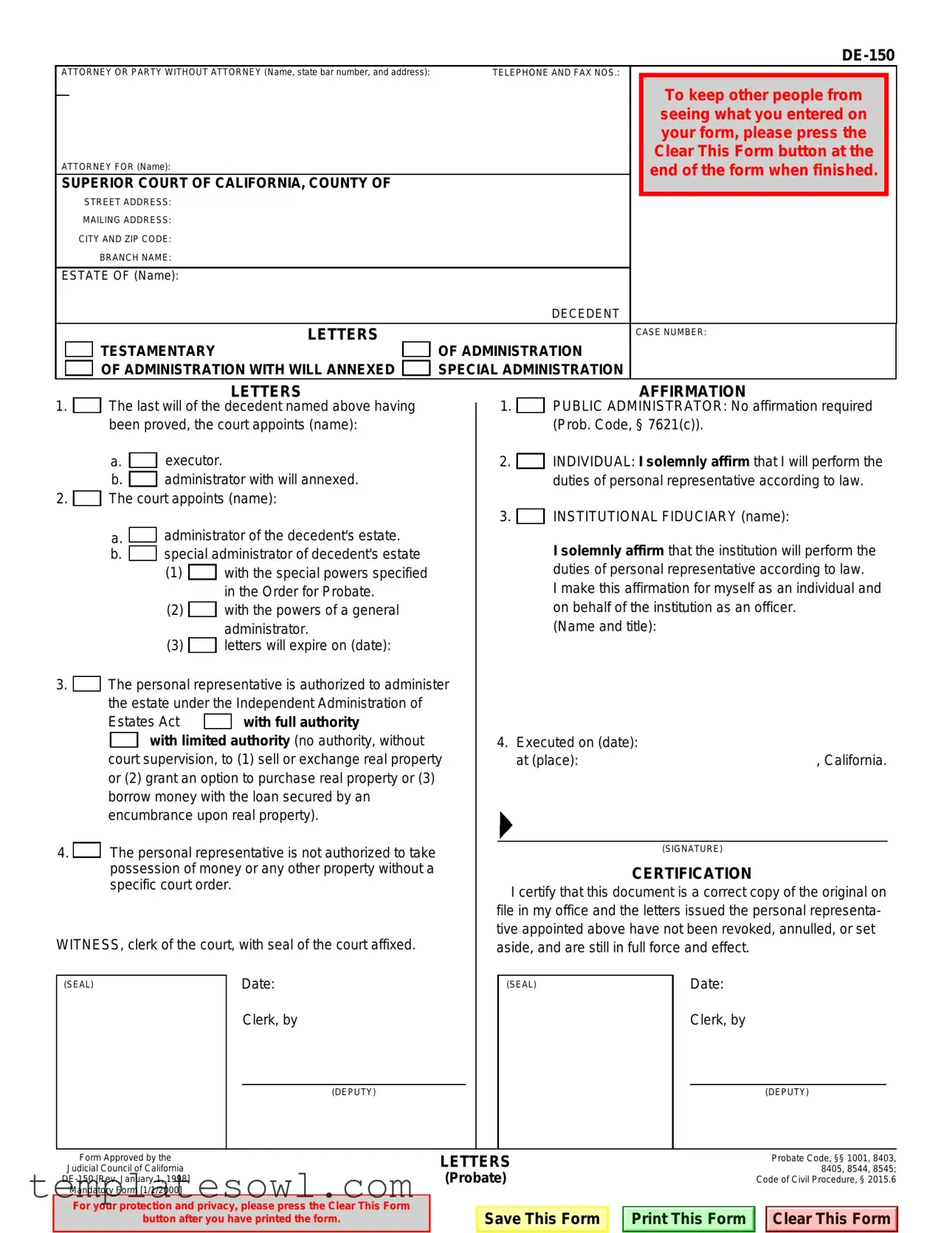What is the purpose of the DE-150 form?
The DE-150 form primarily serves as a request for letters of administration or testamentary in the probate process within California. It enables a court to officially appoint an executor or administrator to manage a deceased person's estate, ensuring that the estate is handled according to the law and the decedent's wishes.
Who needs to fill out the DE-150 form?
Any individual or institution looking to administer the estate of a deceased person in California must complete this form. This could include personal representatives or executors named in the will or individuals seeking to become administrators if there isn't a will.
What information is required to complete the DE-150 form?
The form requires several pieces of information, such as the names and addresses of the attorney or party involved, the name of the decedent, details of the estate, and the case number. You’ll also need to specify whether you are applying for letters of administration or testamentary, among other details about the powers granted to the personal representative.
What does “letters of administration” mean?
Letters of administration are a legal document issued by the court that grants an appointed individual or entity the authority to manage a deceased person's estate. This includes settling debts, distributing assets to beneficiaries, and handling any other necessary responsibilities related to the estate.
What does the term “executor” refer to?
An executor is a person or institution that is named in a will to carry out the wishes of the deceased. This role includes managing the estate, as well as ensuring that the stipulations in the will are followed. If there is no will, the court may appoint an administrator instead.
Can someone apply for the DE-150 form without a lawyer?
Yes, individuals can fill out and submit the DE-150 form without the assistance of an attorney. However, because probate laws can be complex, it may be beneficial to seek legal advice to ensure all aspects of the process are properly addressed.
What happens after submitting the DE-150 form?
Once the DE-150 form is submitted, the court will review the application. If everything is in order, the court will issue the letters of administration or testamentary, officially appointing the executor or administrator to manage the estate.
How long does the DE-150 process take?
The length of the process can vary depending on several factors, including court schedules and the completeness of the submitted information. Generally, it may take several weeks to a few months before the court issues the letters.
What should I do once I have received the letters of administration?
After receiving the letters, the personal representative should begin the process of managing the estate. This may involve gathering assets, paying debts, notifying beneficiaries, and potentially filing tax returns for the estate. Keeping accurate records throughout this process is essential.





 The personal representative is not authorized to take possession of money or any other property without a specific court order.
The personal representative is not authorized to take possession of money or any other property without a specific court order.
